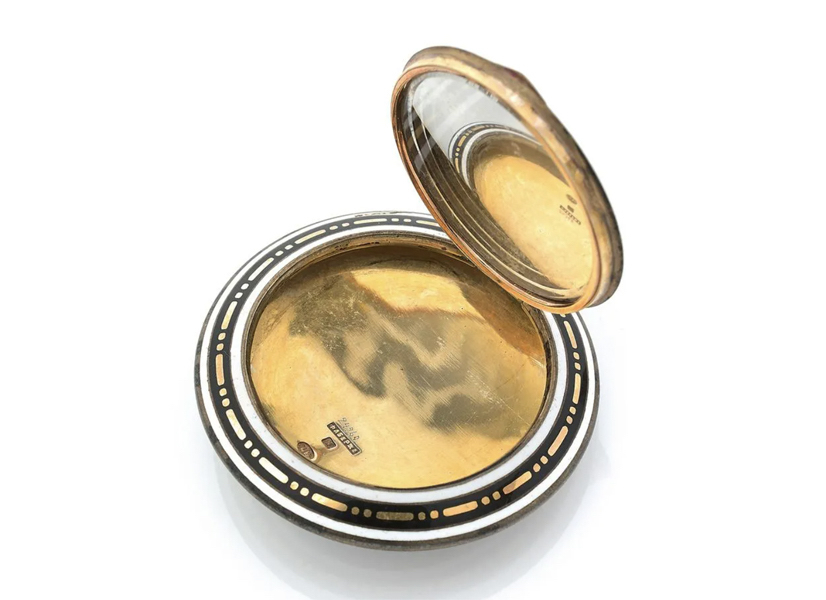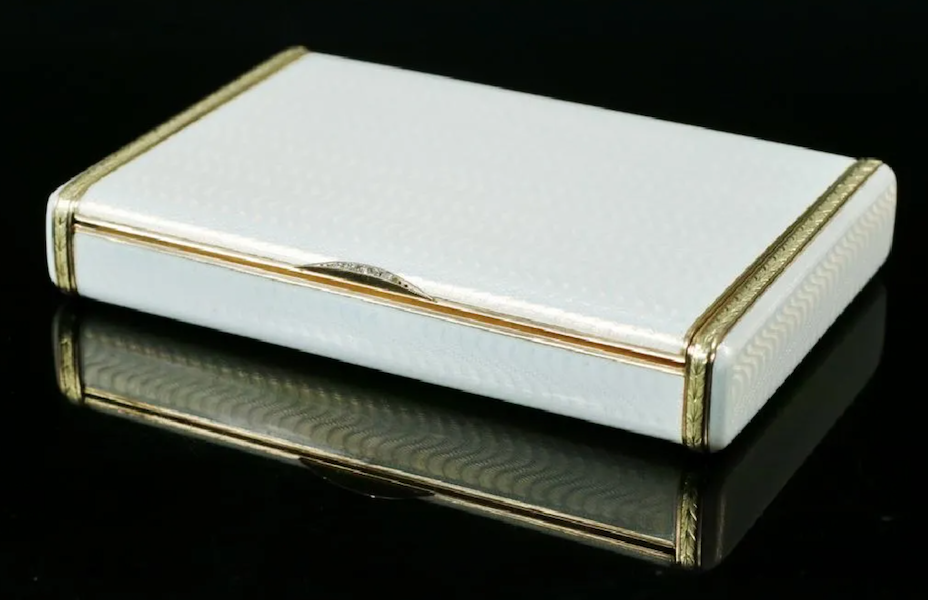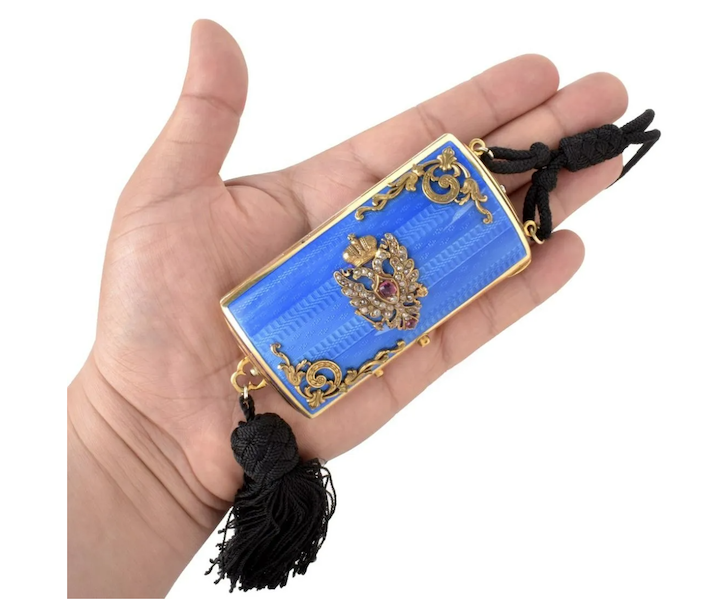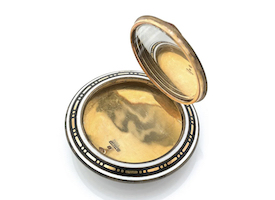
A Faberge Henrik Wigstrom compact in enameled silver from the 1900s sold for €1,200, or $1,310 plus the buyer’s premium in June 2022. Image courtesy of Piasa and LiveAuctioneers.
NEW YORK — Faberge began as a jewelry firm in 1842 in St. Petersburg, Russia, and is famous for its Imperial Easter eggs. These jeweled and opulent works of art were mostly made between 1885 and 1917, with slightly more than 50 examples surviving today. While it has changed hands and now only focuses on jewelry and gemstones, the House of Faberge was also once well known for its luxury accessories, which ranged from clocks and silver trophy cups to smalls such as snuff boxes and compacts.
Compacts, in particular, are an interesting category to survey as they don’t generally receive the attention or earn the prices that larger Faberge objects command, but they have been considered essential for centuries. Makeup dates back to the ancient Egyptians, who thought that it not only made them more attractive but more appealing to the gods. In that era, it was common for both men and women from all walks of life to wear makeup. The need to store it for travel prompted the invention of the makeup compact. These small cases were usually made from metal and round in shape, but not always. They typically contained a mirror along with loose or pressed powder and a puff for applying it to the face.
Today, compacts are more likely to be fashioned from plastic, and they can be produced as single compacts or larger versions with multiple slots in which makeup can be changed in and out. Back in the early 1900s, however, Faberge was among the luxury-goods brands designing elegant compacts in gold or silver that were often decorated with jewels. The wealthy commissioned designers such as Faberge to create custom compacts for personal use.

One of Faberge’s most skilled and renowned workmasters was Andrei Karlowitsch Adler (active 1855–1912), who created exquisite objects in silver and gold for Faberge and in his own workshop, Adler & Co. He was celebrated for his enameling, as evidenced by a rectangular Faberge gilt-silver compact that sold for $5,500 plus the buyer’s premium in August 2018 at Thomaston Place Auction Galleries. This two-color compact has nearly translucent pearl white-oyster guilloche enameling. Attention to detail is obvious throughout this object, which features ends banded with rose and green gold laurel moldings and a thumbpiece set with five rose-cut diamonds. The compact has a beveled edge mirror on the interior and came in a red leather fitted case, probably made by Faberge’s one-time rival, Cartier. After the Russian Revolution, which forced Faberge workshops to close, Cartier locations in Europe resold Faberge objects in its distinctive Cartier red cases. A similar guilloche case is pictured in Caroline de Guitaut’s book Faberge In the Royal Collection.

Average compacts had minimal decoration on the exterior, but the best of the best were embellished with engraving, gilt work or gemstones, as with a silver compact that made $2,750 plus the buyer’s premium in October 2013 at Fontaine’s Auction Gallery. The ornate compact boasts lavish decoration in relief, including a spider web, a Maltese cross, an owl, a snake and a double eagle, to name a few. The jeweled case is further adorned with sapphire, ruby and pearl cabochons.
Another important workmaster at Faberge was Henrik Immanuel Wigstrom (1862–1923), a silversmith and goldsmith originally from Finland. Wigstrom succeeded Faberge’s head workmaster Michael Perchin in 1903 after the latter’s death. Like most Faberge artisans, Wigstrom was proficient in enameling, as seen in a delicate 1900s compact set in enameled silver on a guilloche background having lines of white, black and gold enamel that sold for €1,200, or roughly $1,310 at Piasa in June 2022.

Several talented gold- and silversmiths came to Faberge via Finland, including August Frederik Hollming (1854–after 1915) whose jewelry design and small case styles leaned towards the modern aesthetic. A fine example is a streamlined pre-Revolutionary Russian gold powder compact case having a rectangular form and a grooved design with a rose-cut diamond clasp. This piece, marked A*H, most likely for August Hollming, realized £5,500, or about $6,491 plus the buyer’s premium in June 2013 at Fellows. The triangular pattern of the grooving on the case exterior is nearly identical to several other compacts known to be done by Hollming.
Colored enamel compacts are highly desirable and timeless in style. A barrel-form blue enamel and silver compact, marked Faberge and featuring an imperial double eagle set with cabochon rubies and diamonds, realized $1,500 plus the buyer’s premium in April 2021 at Kodner Galleries Inc.

Faberge revived the nearly lost art of enameling with its range of high-end delights that included its luxurious compacts, and its silver- and goldsmithing was without compare. Faberge compacts from the early 20th century rarely appear at auction today, but when they do, many can still be had for a fair price as compared to Faberge’s other creations.


